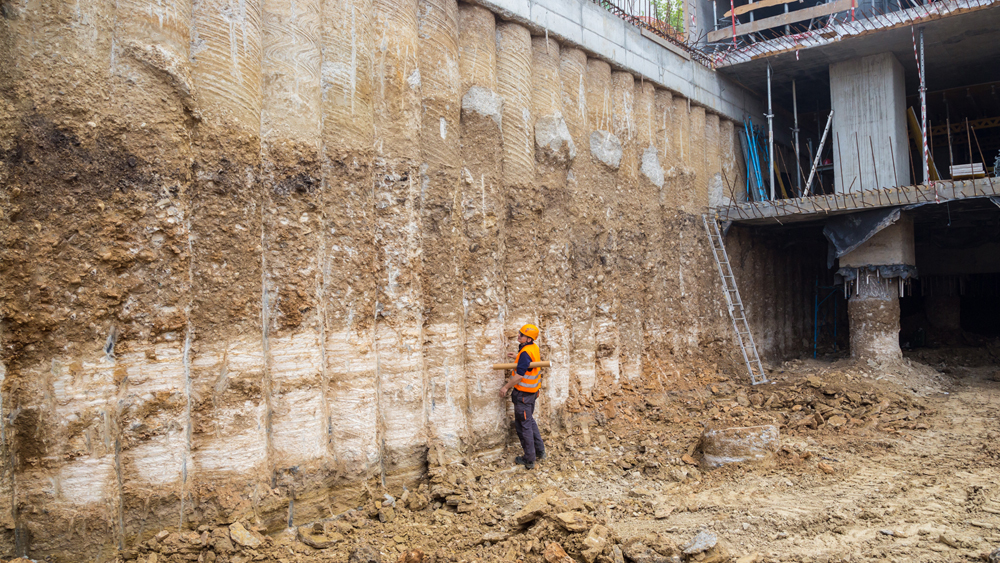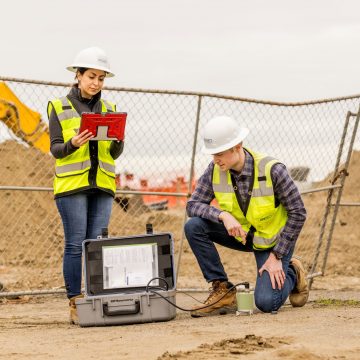Tailings Engineer: Crucial Experience for Sustainable Waste Monitoring in Mining
Tailings Engineer: Crucial Experience for Sustainable Waste Monitoring in Mining
Blog Article
Exploring the Innovative Strategies and Technologies Shaping the Future of the Geotechnical Market for Lasting Design Solutions
The geotechnical market is going through a transformative shift, driven by innovative methods and technologies that stress lasting design remedies. Advanced dirt stabilization approaches, the use of wise materials, and the application of information analytics are redefining exactly how we approach framework challenges.
Advanced Soil Stablizing Techniques
Soil stabilization is a vital procedure in geotechnical engineering, intended at enhancing the physical homes of soil to boost its load-bearing capability and sturdiness. Advanced soil stablizing techniques play a crucial duty in dealing with obstacles linked with weak or unpredictable soils, thereby allowing secure and effective building and construction practices.
Among the prominent approaches, chemical stabilization includes making use of additives such as lime, cement, or fly ash, which respond with soil fragments to form a much more cohesive mass. This strategy is specifically effective in improving the strength and wetness resistance of large clay dirts. Mechanical stablizing, on the various other hand, entails the physical alteration of dirt homes through compaction or the incorporation of granular products, leading to boosted thickness and stability.
An additional cutting-edge strategy is the use of geosynthetics, which supply reinforcement and reduce soil disintegration while boosting drainage. Strategies like soil mixing and deep dirt stabilization are likewise gaining traction, enabling in-situ treatment of troublesome dirts. Collectively, these sophisticated techniques not only boost the efficiency of soil structures but likewise add to sustainable design practices by minimizing the requirement for substantial excavation and product transport.
Smart Materials in Geotechnics
Advancement goes to the center of geotechnical engineering, specifically with the incorporation of clever materials that improve the performance and capability of soil frameworks. Smart materials, such as form memory alloys, piezoelectric products, and self-healing polymers, are reinventing the method designers come close to dirt stablizing and framework long life (geotechnical engineers). These products can adapt to transforming ecological conditions, reply to stress, and also repair themselves, substantially improving the durability of geotechnical systems
For example, piezoelectric products can produce electrical charges in response to mechanical anxiety, using possible for real-time monitoring of soil conditions and structural honesty. Self-healing materials can autonomously fix fractures and problems, lowering maintenance prices and expanding the life expectancy of geotechnical possessions. The combination of these clever products not only boosts the mechanical properties of dirt yet additionally adds to lasting design methods by reducing source intake and ecological impact.
As the geotechnical sector remains to progress, the fostering of wise materials will play a vital duty in developing innovative remedies, ensuring that frameworks are not just robust yet likewise versatile to future challenges. This transformative approach is poised to redefine the requirements of security and efficiency in geotechnical design.
Data Analytics for Framework
The combination of smart products in geotechnical design has actually led the way for sophisticated methodologies, particularly in the realm of information analytics for framework. This ingenious approach leverages comprehensive information collection and analytical strategies to boost decision-making procedures throughout the infrastructure lifecycle. By making use of sensing units embedded in clever materials, designers can constantly check vital criteria such as dirt security, dampness degrees, and architectural integrity.
Data analytics makes it possible for the improvement of raw data into workable insights, allowing for anticipating upkeep and enhanced danger administration. Advanced algorithms and artificial intelligence strategies assist in the recognition of patterns and abnormalities, which can maximize and notify prompt interventions resource allotment. In addition, incorporating geographical information systems (GIS) enhances spatial analysis, more enriching the decision-making structure.
As infrastructure tasks grow in intricacy, the reliance on information analytics becomes significantly essential. It cultivates an aggressive method, lessening the likelihood of failings and making sure the durability and sustainability of frameworks. By utilizing the power of data analytics, the geotechnical sector is positioned to not just enhance current methods yet also pioneer ingenious remedies for future facilities obstacles. This harmony of modern technology and design principles will define the future of sustainable framework growth.

Sustainable Ground Improvement Methods
Various sustainable ground enhancement approaches are arising as essential remedies to attend to the difficulties of geotechnical engineering while lessening ecological influence. These methods not just boost soil performance however additionally advertise eco-friendly stewardship by reducing dependence on typical, a lot more intrusive strategies.

An additional ingenious technique is the application of geosynthetics, which includes eco-friendly materials that reinforce soil while advertising drain and disintegration control - engineer of record. This reduces the requirement for heavy machinery and lessens site disturbance, hence protecting neighborhood ecosystems
Furthermore, strategies such as vibrant compaction and vibro-replacement have progressed to consist of lasting practices, integrating recycled products and minimizing carbon impacts. These approaches exhibit the market's change towards even more environmentally responsible services, making sure that ground renovation not just fulfills design requirements but also adds positively to the surrounding atmosphere.
Advancements in Ecological Monitoring
In recent years, innovations in ecological surveillance have significantly enhanced the capacity to analyze and take care of geotechnical projects with minimal ecological disturbance. Innovative innovations, such as remote noticing, Internet of Points (IoT) gadgets, and real-time data analytics, are transforming how ecological effects are determined and reduced.
Remote noticing technologies, consisting of satellite imagery and airborne LiDAR, assist in the fast analysis of land use modifications and ecological conditions - consulting engineer. These tools permit continual monitoring of websites, allowing engineers to recognize potential problems before they escalate. In addition, IoT devices, geared up with sensing units for specifications like soil temperature, wetness, and gas exhausts, provide real-time information streams that boost the understanding of site-specific ecological variables
Real-time information analytics better refine decision-making procedures by integrating data from various resources, allowing for aggressive management techniques. This all natural method not only makes certain conformity with ecological policies however likewise Read Full Report promotes lasting methods within the geotechnical market.
As these developments remain to advance, they hold the potential to link the gap in between design purposes and environmental stewardship, cultivating a more sustainable future for geotechnical jobs worldwide.
Final Thought
To conclude, the geotechnical market is undertaking a transformative advancement driven by innovative methods and modern technologies that focus on sustainability. Advanced dirt stabilization techniques, the combination of smart materials, and the application of data analytics jointly boost the strength and performance of framework. Additionally, lasting ground improvement methods and technologies in ecological tracking emphasize the industry's dedication to environmental stewardship. These advancements not only address contemporary engineering obstacles yet likewise pave the way for an extra lasting future in geotechnical techniques.
Methods like soil mixing and deep soil stablizing are also gaining traction, permitting for in-situ therapy of troublesome soils. Collectively, these innovative approaches not just improve the performance of soil frameworks yet additionally contribute to lasting engineering practices by decreasing the need for comprehensive excavation and product transport.

Report this page